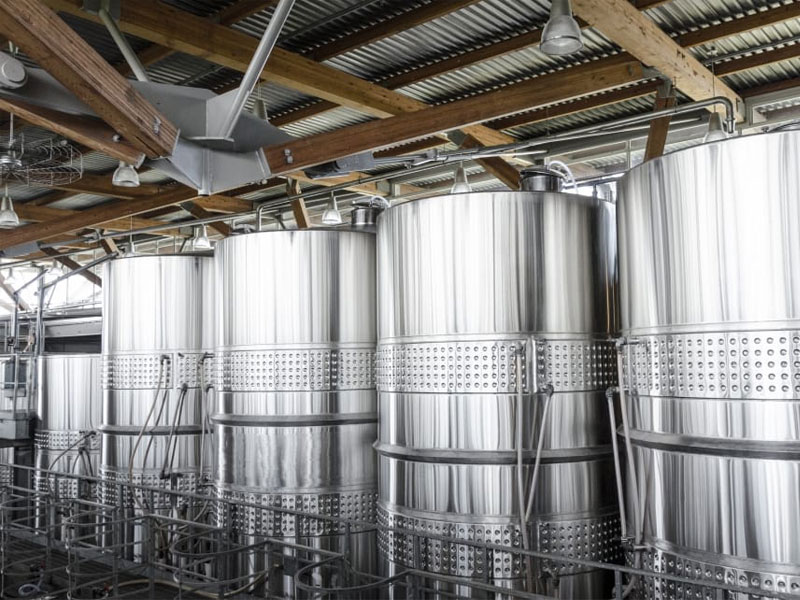Australian spider beetle and Golden spider beetle infestation

Both the Australian Spider beetle and the Golden Spider beetle are considered to be a general scavengers. It is not rare for this pest to infest domestic properties, however the Australian Spider beetle is popular to infest primarily warehouses. In homes, this beetle would typically be found in drop ceilings and wall voids, as it is very common in bird nests and it often enters properties from infested nearby nests. Bird nests are protected in the UK and should be removed under a specific bird licence, although they attract many other pests rather than beetles, such as cockroaches, fleas, mites and others.
However, the Golden Spider beetle is not only found in the stored products areas but also in textiles as it can feed on them as well. Bird nests would also be a typical source of food for this pest, which makes it easier to migrate from nearby nests to domestic or commercial premises.
There is a variety of stored products, which can attract the Australian Spider beetle and the Golden Spider beetle. These two pests are not considered dangerous to people or pets, however the products infested by them are not suitable for consumption or use and should be disposed of and their containers (if re-usable) should be thoroughly cleaned before replacing the products.
Australian and Golden spider beetle control

The Australian Spider beetle and the Golden spider beetle infestations are usually found in domestic properties as well as in business premises such as warehouses, grain mills, storage areas, etc… The most effective way to prevent a Australian Spider beetle or a Golden Spider beetle infestation is regular cleaning and checks of the stored products and operating devices, in the case of businesses handling stored products. Not allowing for any dampness to develop and making sure all products are well sealed in their containers would help you to prevent the stored product infestation to develop.
In case that Australian Spider beetle infestation is present, the infested products should be disposed of and thorough cleaning and sanitisation of the area should be performed. Then professional pest control services should be employed to successfully eradicate the infestation as there may be different types of treatments required, depending on how much the infestation has evolved. A professionally-trained pest technician will inspect the premises thoroughly and will create a report and a risk assessment, which will consist all the information about the level of the infestation and the best way to tackle it.
If the infestation of any of the two pests is limited to a roof space, fumigation can be done to successfully exterminate the stored product insect infestation. In case the infestation has spread to other areas, it may be also tackled with insecticides with long-lasting post-treatment effect, which will ensure the exterminating effect of the treatment. However, the insecticides can work only on the larvae, the pupa and the adult forms of the pest, while the eggs are usually resistant to them. This is why when insecticides are employed in the extermination process, a return visit is required around 3 months after the first one, the make sure the newly-hatched eggs would be eradicated as well.
Prime Pest Control offers domestic and commercial pest control services for the eradication of Australian Spider beetle infestations in North, South, West and East London and the surrounding counties. Our british Pest Control Association (BPCA) trained pest technicians have been exterminating stored product insect infestations for many years and pride themselves in being specialists in the area, making sure they are up-to date with the latest products and techniques for the eradication of such infestations.
Call our friendly customer team today for any questions about the Australian Spider beetle, the Golden Spider beetle or any other stored product insect and their infestations. You can also book your inspection with one of our experienced pest technicians to have your tailored pest management plan for the complete eradication of your Australian Spider beetle or Golden Spider beetle infestation.
About Australian and Golden spider beetle
The Australian Spider beetle (Ptinus Tecus Ocellus) and the Golden Spider beetle (Niptus Hololeukus) are general scavengers found to infest domestic properties but mainly considered warehouse pests.
The life cycle of the Australian Spider beetle starts with an adult spider laying around eggs, which are opalescent in colour and have sticky surface, to which debris and food usually adhere. When the eggs hatch (between 8-9 days) the larvae are cream in colour, with curved bodies and covered in fine hairs. They then make a cocoon in cardboard or wooden boxes, where the pupation happens after 3 instar stages of the larvae (approx. 50 – 60 days). When the pupa develops it takes it 14-16 days for it to turn into an adult spider beetle, which then spends 9-10 days in the cocoon before coming out. The total lifespan of the pest is 90-95 days.
The Australian Spider beetle is able to survive through cold temperatures and should the pupation happen to be in the winter, the larva does not evolve into a pupa before the following spring. It would bore into a cardboard or wooden material, where it will make a cage-like formation, where it will remain to further develop into a pupa and then into an adult spider beetle.
The Australian Spider beetle looks like a small spider, as its name suggests, or like a giant mite. It has an oval body and it is 2.4 – 4 mm long. The body of the insect is brown-black in colour and is covered with brown and golden hairs. The spider has filamentous antennae on the head, which usually have 11 segments.
The life cycle of the Golden Spider beetle is very similar to the one of the Australian Spider beetle, with 11 – 20 days required for the eggs to hatch, 150 days for the larva to complete this stage and 18 – 26 days for the pupa to reach maturity and turn into an adult. The total life span of the Golden Spider beetle may reach 250 days. It is 3 to 4.5 mm in length and has golden yellow colour. The body is covered with hairs and wings are not present.
